4th Expeditionary Reconnaissance Squadron
The 4th Expeditionary Reconnaissance Squadron is an inactive United States Air Force unit. Its last assignment was with 455th Expeditionary Operations Group, based at Bagram Airfield, Afghanistan. It was inactivated on 1 October 2014.
4th Expeditionary Reconnaissance Squadron
 | |
|---|---|
.jpg) Airmen welcome the first Air Force MC-12 to be based in Afghanistan[note 1] | |
| Active | 1941–1949; 1966–1971; 2009–2014 |
| Country | |
| Branch | |
| Role | Reconnaissance |
| Part of | Air Combat Command |
| Decorations | Air Force Outstanding Unit Award[1] |
| Insignia | |
| 4th Expeditionary Reconnaissance Squadron emblem (Updated October 2009)[1] | 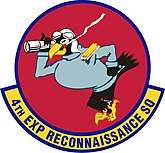 |
| 4th Observation Squadron emblem (approved 12 March 1943)[2] | _emblem.png) |
The squadron was first activated as the 4th Observation Squadron in Puerto Rico in 1941. During World War II it served from island bases in the eastern Caribbean Sea. It remained active after the war as the 4th Tactical Reconnaissance Squadron, becoming one of the first jet equipped reconnaissance squadrons in the Air Force before being inactivated in 1949's military budget reductions. It was active again from 1966 to 1971, primarily training crews for the Vietnam War, before its current role as an expeditionary unit, which began in 2005.
History
Caribbean operations
World War II
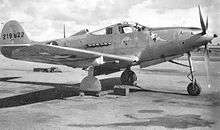
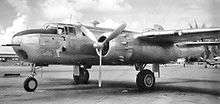
The squadron was first activated in April 1941 as the 4th Observation Squadron. Initially planned to serve as the main observation unit for the 13th Composite Wing, the unit in fact led something of a nomadic existence, being successively attached or assigned to the Puerto Rican Department, the 72d Observation Group, to the Antilles Air Task Force from 23 March 1943 until 1 June 1943, and finally to the Antilles Air Command itself from 1 June 1943 until the end of the war. In fact, this squadron was the only squadron to both start and finish the war in the Antilles throughout.
The squadron was initially stationed at Ponce Air Base, Puerto Rico when activated. The unit itself had been formed from cadre drawn from Air Corps units already in Puerto Rico. By 5 June 1943, the squadron strength had increased to 12 aircraft. By the end of the month, one of the Curtiss O-52 Owls had been sent on detached service to Haiti, apparently in connection with the attempt that poor nation was making to establishing a coastal patrol of its territorial waters at the time. In early July 1943, the squadron received the first three of a number of Bell P-39Q Airacobra fighters that it was to operate until the end of the war.
On 27 October 1943, the squadron moved en masse to Borinquen Field, as Losey Field was turned over to the Army Ground Forces due to its rather poorly situated runways. At this time, and since the Squadron's assignment to Antilles Air Command on 1 June, the unit became one of the primary tactical operating units in the area. Fortunately, the command recognized the new importance of the unit, and lobbied for equipment more capable than previously assigned.
The following month, reflecting the changing war situation, the squadron received a North American B-25D Mitchell and four new B-25Gs, and in February 1943 added three more P-39Qs (for a total of nine), three new P-39Ns, and Douglas B-18 Bolos.
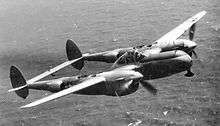
The squadron was occasionally tasked to perform flights throughout the Caribbean and, on one occasion, when the new airport was dedicated at Ciudad Trujillo in the Dominican Republic, every available P-39 was sent over (with belly tanks) where they put on a very lengthy aerial display for the locals.
By 10 March 1944, unit strength had been considerably depleted, and the on-hand aircraft census consisted of three B¬25Ds and B-25Gs, a B-18 and a B-18C, three P-39Ns, and three P-39Qs. In October 1944, the Squadron received additional B-25D's. Shortly thereafter, the squadron was redesignated the 4th Tactical Reconnaissance Squadron.[1]
Aside from frequent detachments of aircraft throughout the entire Caribbean basin during most of the war on an "as needed" basis, the unit itself did not move as a whole again until 21 May 1945 when it moved from Borinquen to Coolidge Field on Antigua where the unit also welcomed with six new Lockheed F-5G Lightnings in June.
Move to Panama
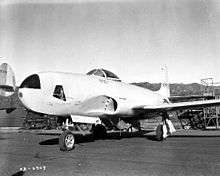
The squadron remained active after the war, moving from the Antilles to Rio Hato Army Air Base in March 1946, when it was assigned to Caribbean Air Command. In 1947, it became one of the first reconnaissance units of the new United States Air Force to be equipped with jet aircraft, when it began to fly the Lockheed RF-80 Shooting Star, moving to France Field, Panama Canal Zone in December.[1] Because the runways at France Field were to short to accommodate the new jets, the squadron's Shooting Stars used the runway at the neighboring Coco Solo Naval Base, although this involved extensive taxiing until the planes were finally moved to the ramp at Coco Solo.[3] President Truman's reduced 1949 defense budget required reductions in the number of units in the Air Force,[4] and the squadron was inactivated on 14 March.[1]
Vietnam war era

The squadron was organized in November 1966 as part of the 75th Tactical Reconnaissance Wing at Bergstrom Air Force Base, Texas. The squadron trained for reconnaissance missions and prepared aircrews for the Vietnam War. In October 1971, the squadron was inactivated and its personnel, mission and equipment were transferred to the 45th Tactical Reconnaissance Squadron.[1][5]
Expeditionary operations in Afghanistan
![]()
In January 2005, the squadron was converted to provisional status as the 4th Expeditionary Reconnaissance Flight and assigned to Air Combat Command to activate or inactivate as needed for operations.[1] It was activated as the 4th Expeditionary Reconnaissance Squadron in November 2009 at Bagram Airfield, Afghanistan to operate the Beechcraft MC-12W Liberty with crews deployed from other locations.[6] Along with the 361st Expeditionary Reconnaissance Squadron, it was one of two MC-12 squadrons comprising Project Liberty. On 1 October 2014, the squadron mission was transferred to Joint Task Force Thor as MC-12W operation moved from the Air Force to the Army.[7] The squadron flew over 40,000 combat flights in Afghanistan. In its last year of operation it participated in the capture or death of over 2400 enemy combatants, including 375 identified as "high value."[8]
Lineage
- Constituted as the 4th Observation Squadron on 22 November 1940
- Activated on 1 April 1941
- Redesignated 4th Observation Squadron (Medium) on 26 February 1942
- Redesignated 4th Observation Squadron on 4 July 1942
- Redesignated 4th Reconnaissance Squadron (Special) on 25 June 1943
- Redesignated 4th Tactical Reconnaissance Squadron on 20 May 1944
- Redesignated 4th Tactical Reconnaissance Squadron (Photographic) on 17 June 1948
- Inactivated on 14 March 1949
- Redesignated 4th Tactical Reconnaissance Squadron and activated on 25 Oct 1966 (not organized)
- Organized on 18 November 1966
- Inactivated on 15 October 1971
- Redesignated 4th Expeditionary Reconnaissance Flight and converted to provisional status on 31 January 2005
- Redesignated 4th Expeditionary Reconnaissance Squadron on 16 May 2007[1]
- Activated 27 December 2009[6]
- Inactivated 1 October 2014[7][8]
Assignments
- 13th Composite Wing, April 1941
- Puerto Rican Department, 14 July 1941
- 72d Observation Group, 29 March 1942 (attached to Puerto Rican Department until 23 March 1943, then to Antilles Air Task Force)
- Antilles Air Command, 1 June 1943
- Caribbean Air Command, 25 August 1946 (attached to Provisional Composite Reconnaissance Group after 1 February 1948)
- 6th Fighter Wing, 1 June 1948 (attached to Provisional Composite Reconnaissance Group)
- 5600th Group, 28 July 1948
- 5600th Wing (later 5600th Composite Wing), 20 August 1948 – 14 March 1949
- Tactical Air Command, 25 October 1966 (not organized)
- 75th Tactical Reconnaissance Wing, c. 18 Nov 1966;
- 67th Tactical Reconnaissance Wing, 15 July – 15 October 1971
- Air Combat Command to activate or inactivate as needed, 31 January 2005[1]
- 455th Expeditionary Operations Group, 27 Dec 2009 – 1 October 2014
Stations
|
|
Aircraft
|
|
References
Notes
- Explanatory notes
- Aircraft is Beechcraft MC-12W Liberty, serial 09-623, operated by the 4th Expeditionary Reconnaissance Squadron.
- Aircraft is Bell P-39Q-5-BE Airacobra, serial 42-19622. Taken in 1943.
- Aircraft is McDonnell RF-4C-33-MC Phantom II, serial 67-430.
- Citations
- Haulman, Daniel (20 April 2012). "Factsheet 4 Expeditionary Reconnaissance Squadron (ACC)". Air Force Historical Research Agency. Retrieved 5 August 2018.
- Maurer, Combat Squadrons, pp. 30–31
- Kamm, Richard W. (31 January 2006). "Early Jet Aircraft Mechanic". St. Louis Air and Space Museum. Archived from the original on 2 April 2012. Retrieved 6 August 2018.
- Knaack, p. 25
- Robertson, Patsy (6 May 2013). "Factsheet 45 Reconnaissance Squadron (ACC)". Air Force Historical Research Agency. Retrieved 13 January 2018.
- Jefferson, TSG Oshawn (5 March 2010). "'Crows' keep watch over Afghan skies". Defense Visual Information Distribution Service. Retrieved 6 August 2018.
- Young, MSG Cohen A. (1 October 2014). "Find Fix and Finish: Air Force MC-12W mission transitions to Army". U>S> Air Forces Central Command Public Affairs. Retrieved 6 August 2018.
- Everstine, Brian (18 October 2014). "Air Force's MC-12 mission ends in Afghanistan". Air Force Times. Retrieved 6 August 2018.
- Aircraft through 1949 in Maurer, Combat Squadrons, pp. 30–31
Bibliography
![]()
- Hagdedorn, Dan (1995). Alae Supra Canalem: Wings Over the Canal. Nashville, TN: Turner Publishing. ISBN 1-56311-153-5.
- Knaack, Marcelle Size (1978). Encyclopedia of US Air Force Aircraft and Missile Systems (PDF). Vol. 2, Post-World War II Bombers 1945–1973. Washington, DC: Office of Air Force History. ISBN 0-912799-59-5. Retrieved 17 December 2016.
- Maurer, Maurer, ed. (1983) [1961]. Air Force Combat Units of World War II (PDF) (reprint ed.). Washington, DC: Office of Air Force History. ISBN 0-912799-02-1. LCCN 61060979.
- Maurer, Maurer, ed. (1982) [1969]. Combat Squadrons of the Air Force, World War II (PDF) (reprint ed.). Washington, DC: Office of Air Force History. ISBN 0-405-12194-6. LCCN 70605402. OCLC 72556.
- Ravenstein, Charles A. (1984). Air Force Combat Wings, Lineage & Honors Histories 1947–1977. Washington, DC: Office of Air Force History. ISBN 0-912799-12-9.
External links
| Wikimedia Commons has media related to 4th Expeditionary Reconnaissance Squadron. |
.jpg)